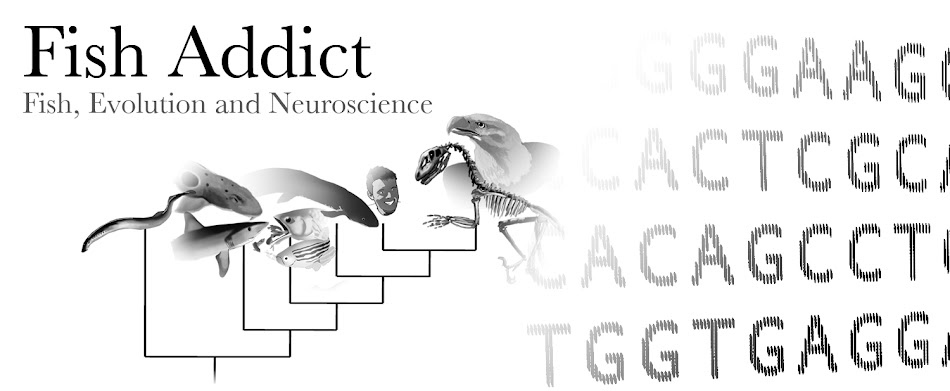Hello again, it was a while since I last made a post on this blog. However now I'm back again and continues to deal with the rise of the tetrapods.
In my previous blog entry I discussed a paper dealing with the origin of tetrapod gait styles, and that the gait style most tetrapods have already was present in the common ancestor of tetrapods and lungfishes. in this post i will deal with another thing lungfishes and tetrapods have in common, namely lungs! A lung is useful when you want to extract oxygen from air rather from water. Simply speaking, a lung is an organ which purpose is to oxygenate the blood and remove carbon dioxide.
Lungs are present in all extant tetrapods, although amphibians use gills during their aquatic larval stages. The closest extant relatives of tetrapods is, as you should know now if you have been following this blog, the lungfishes. As their name implies they also have lungs, either a pair as one can see in the Lepidosireniformes or one lung as in the Australian lungfish (Neoceratodus foster). However they also have gills. There is no doubt that the lungs of the lungfishes are homologous to their tetrapod counterparts. However it has long been suggested that the swim bladder of ray-finned fish (Actinoptherygians) has a common origin (is homologous) to the lung. A swim bladder is an organ present in most ray-finned fish, both teleost and non-teleost. It usually consists of two connected sacs which holds gases. This organ is mainly used for buoyancy control (like a BCD for you divers out there). In some lineages the swim bladder is connected to the intestines throughout life and in some species this connection is closed some time after hatching. The swim bladder can either be filled by inhaling air from the surface sort of how we fill our lungs. It can also be filled using a special organ that extracts gasses from the blood.
 Developmentally the swim bladder and lungs seem to have the same origin. However genetic evidence for a common origin, which would strengthen the hypothesis of homology of the lung and swim bladder, have been scarce. Not all to long ago a paper on this subject was published in PlosOne (Zheng et al. 2011). What they did was to take a look at what types of genes were expressed in the swim bladder tissue of zebrafish (Danio rerio) and compare the swim bladder gene expression profile with the ones of mouse and human lungs. The interesting thing they could see was that the lung and swim bladder expression profiles overlapped which would provide further evidence for a shared origin of lungs and swim bladders.
Developmentally the swim bladder and lungs seem to have the same origin. However genetic evidence for a common origin, which would strengthen the hypothesis of homology of the lung and swim bladder, have been scarce. Not all to long ago a paper on this subject was published in PlosOne (Zheng et al. 2011). What they did was to take a look at what types of genes were expressed in the swim bladder tissue of zebrafish (Danio rerio) and compare the swim bladder gene expression profile with the ones of mouse and human lungs. The interesting thing they could see was that the lung and swim bladder expression profiles overlapped which would provide further evidence for a shared origin of lungs and swim bladders.
It is therefore possible that the common ancestor of ray-finned fish and lobe-finned fish had a swim bladder type organ that in shore/shallow water dwelling lobe-finned fish adapted to also serve as a air breathing organ and then later into "real" lungs, while it in more pelagic species remained a buoyancy control device that in even more specialized species (many teleost fish) lost its connection to the intestine all together.
Reference
Zheng W, Wang Z, Collins JE, Andrews RM, Stemple D, & Gong Z (2011). Comparative transcriptome analyses indicate molecular homology of zebrafish swimbladder and mammalian lung. PloS one, 6 (8) PMID: 21887364
It is therefore possible that the common ancestor of ray-finned fish and lobe-finned fish had a swim bladder type organ that in shore/shallow water dwelling lobe-finned fish adapted to also serve as a air breathing organ and then later into "real" lungs, while it in more pelagic species remained a buoyancy control device that in even more specialized species (many teleost fish) lost its connection to the intestine all together.
Reference

No comments:
Post a Comment